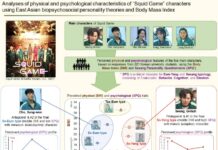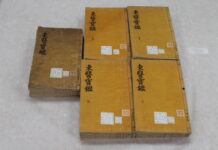
Diagnosis, Actions, and Clinical Applications-“Shang Han Lun”, “Jin Kui Yao Lue”
By Ju Bong Kang, KMD
Actions and Diagnosis
Banxia-Xiexin-Tang is a prescription for treating epigastric glomus caused by the binding and stagnation of cold and heat with phlegm in the epigastrium. Therefore, this prescription treats various diseases of which epigastric glomus is palpated in the abdominal diagnosis when symptoms of phlegm or phlegm-retention are accompanied. Here, ‘epigastric glomus’ is said to be a ‘signal-symptom’ of this prescription.
∙Huangqin and Huanglian, bitter and cold in nature, are the monarch drugs in this prescription, treating heat syndrome in the stomach and intestines, reducing inflammation, stabilizing emotions, and alleviating nerve-related symptoms. Heat-induced digestive issues can cause borborygmus, belching, nausea, dizziness, diarrhea, and abdominal pain.
∙Banxia and Ganjiang serve as minister drugs. Banxia addresses nausea, vomiting, dizziness, diarrhea, borborygmus, and neurological symptoms caused by phlegm-retention, which may result from qi-deficiency, qi-stagnation, or the bitter-cold effects of Huangqin and Huanglian. Ganjiang, pungent and warm, treats cold syndrome of the spleen, lung, and stomach, improving nausea, abdominal cold, cold extremities, and aversion to cold.
∙Renshen, Gancao, and Dazao function as adjuvant drugs. Renshen replenishes qi and body fluid and calms the spirit, counteracting the bitter-cold effects of Huangqin and Huanglian. Gancao strengthens qi and harmonizes the formula. Dazao invigorates qi, nourishes blood, and soothes the mind, alleviating fatigue and restlessness.
∙In diagnosis, the signal-symptom of this Banxia-Xiexin-Tang, the epigastric glomus, can sometimes appear as the epigastric hard glomus. To give an example based on the “Shang Han Lun” articles: in the article explaining Gancao-Xixin-Tang, which increased Gancao amount by 1.5 times, the word ‘epigastric hard glomus’ was used, not ‘epigastric glomus’; in the same way, the word ‘epigastric hard glomus’ was used in the article explaining of Shengjiang-Xixin-Tang, in which Shengjiang was added to Banxia-Xiexin-Tang. In clinical practice, Xiangfuzi can be added if ‘epigastric glomus’ appears as ‘epigastric hard glomus’ due to stagnation of qi and blood in patients who can use Banxia-Xiexin-Tang. If ‘epigastric glomus’ appears as ‘epigastric hard glomus’ due to food stagnancy, Zhishi may be added.
Application
If epigastric-glomus appears when abdominal diagnosis is performed, this prescription is used for symptoms such as vomit, belching, diarrhea, abdominal pain, constipation, anxiety, deep sorrow, or diseases such as gastritis, esophagitis, hyperacidity, gastric ulcer, duodenal ulcer, and chorea, etc.
Distinction
∙Huanglian-Tang: Derived from Banxia-Xiexin-Tang by removing Huangqin, adding Guizhi, and increasing Huanglian to 6g. It shares a similar abdominal diagnosis but with milder epigastric glomus, pressure pain, headache, and cold feet due to Guizhi.
∙Gancao-Xiexin-Tang: Suitable for Banxia-Xiexin-Tang symptoms with mental instability and epigastric hard glomus.
∙Shengjiang-Xiexin-Tang: Similar to Banxia-Xiexin-Tang but with severe belching and borborygmus.
∙Xuanfuhua-Daizheshi-Tang: Best for persistent belching with epigastric hard glomus.































